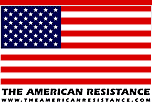Investors Push NAFTA Super-Highways
Articles
By Jerome R. Corsi, Human Events Online, June 30, 2006
http://www.humanevents.com/article.php?id=15839
Critics have recently argued that plans to form NAFTA Super-Highways in the United States were largely “urban legend” or just pure “hype.” These same critics note that many state departments of transportation are strapped for cash and that states north of Texas have no current plans to build super-highways, extending the Trans-Texas Corridor (TTC) north to Canada.
Currently no state except Texas currently has plans to build TTC-like highways, with designs to build transportation corridors up to four football fields-wide that integrate highway toll roads, railroad transportation and utility zones for oil and natural gas pipelines, alongside towers to transmit electricity to businesses and homes along the route. Moreover, most state treasuries are already strapped just to maintain existing highways. A study by the National Chamber Foundation of the U.S. Chamber of Commerce concluded that even the Highway Trust Fund will have a zero cash balance in 2008 unless gasoline taxes are raised.
Yet key players, including the investment bankers and the worldwide capital investment funds, have a plan to address these fiscal shortcomings with their own resources. On April 30, 1992, President George H.W. Bush signed Executive Order No. 12803 on infrastructure privatization, a move that cleared the way for private capital to invest in U.S. infrastructure projects, including highways. As noted by C. Kenneth Orski, editor and publisher of the transportation industry publication Innovation Briefs, the model has been established in Europe:
In Europe, virtually all major toll road authorities have been privatized....
Capital groups such as Cintra Concesiones de Infraestructures de Transport in Spain and the Macquarie Infrastructure Group and Transurban in Australia are positioned to make substantial investments in the build-out of NAFTA Super-Highways along I-35 extending north from Texas, as well as in the various NAFTA corridors identified throughout the United States.
With the trillions in infrastructure investment dollars needed to build the next generation of super-highways in the United States, especially under the emerging North American Union structure, investment bankers and those who run capital investment funds stand to make hundreds of millions, probably even billions, in fees. This alone is enough to drive forward the NAFTA Super-Highway movement and to make sure politicians willing to support the movement have ample funds with which to run their campaigns and live their lives comfortably.
The Trans-Texas Corridor (TTC) can be seen as the “test case.” The investment world is carefully watching, anticipating that the Texas Department of Transportation will succeed with Cintra in constructing what is called TTC-35 along I-35 from Laredo at the southern border to the northern border heading toward Oklahoma City. Final hearings are being held by the TxDOT in July and August and final federal approval is anticipated by the summer of 2007. The TxDOT plans to sign final contracts immediately thereafter and begin construction. Already, investment bankers and international capital groups are in discussion with state officials throughout the United States, with the intention of replicating the TTC design in the build out of a NAFTA Super-Highway network throughout the United States.
I have previously written that the plan behind building the TTC is disclosed on the Kansas City SmartPort website. The goal is to open ports in Mexico, such as Lazaro Cardenas, which can receive containers with goods manufactured by cheap labor in China and the Far East, to be transported into the heart of America by using Mexican trucks and NAFTA railroads originating in Mexico. A key feature of the plan is to bypass and undercut U.S. labor unions, including the Longshoremen’s Union, the railroad United Transportation Union and the Teamsters. This is more than a Bush Administration globalist plan to advance open borders and open skies in the name of free trade. Across the NAFTA Super-Highways will flow millions more Mexicans, now armed with North American border passes and biometric identification, as defined by the Security and Prosperity Partnership of North America working groups organized within the Department of Commerce.
There's no objection to the infusion of international private capital into the nation’s highway infrastructure per se....
What is objectionable is the plan to form a European Union-style North American Super-Highway system whose primary goal is to establish trilateral links for the open passage of freight transportation and the virtually unrestrained “migration” of people among the three countries. Building NAFTA Super-Highways that effectively erase the U.S. borders with Mexico and Canada is a concern, especially if the NAFTA Super-Highways contribute to accomplishing in a de facto manner the integration of the United States into a North American Union, thereby threatening the currently established sovereignty of the United States.
What is needed is a robust and honest discussion of these important issues, with the American people fully involved and engaged in the debate. To date, President Bush has remained largely silent on the extent and true nature of his plans to create a North American Union that can openly be navigated via NAFTA Super-Highways. If the Bush Administration’s plan is to create the North American Union and the NAFTA Super-Highways incrementally -- through technical actions taken within the confines of executive branch meetings -- that process of implementation will be inconsistent with the processes of constitutional democracy we currently believe we enjoy in the United States. It’s up to Bush to come forward and present honestly his plans regarding these critical issues of our nation’s future so the American people can enter a properly informed debate.
Read the complete article.
In order to use copyrighted material from this site for purposes of your own that go beyond 'fair use', you must obtain permission from the copyright owner.

